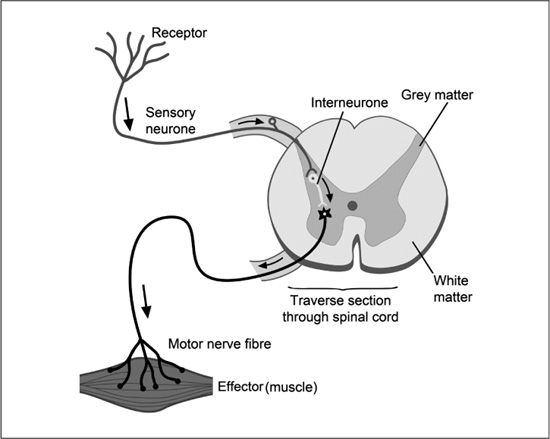Physiology: Animal Function and ReproductionNervous System |
What is a reflex arc? |
A reflex is an involuntary response to a specific stimulus; the most simple nerve response is called a reflex arc—an inborn, automatic, and protective response of humans (and some other organisms). The most well-known example is the knee-jerk response, when a doctor taps gently around your kneecap with a hammer. This reflex is due to only two neurons—the sensory neuron that, after the tap, sends an impulse to the motor neuron that causes the thigh muscle to contract. An even more complex reflex, for example, when you jerk your hand away from a hot stove, involves three neurons—a sensory neuron transmits an impulse to the interneuron in the spinal cord; that sends an impulse to the brain for processing and one to the motor neuron to the muscle to make a change—in other words, pull your hand away quickly.

In a reflex arc, a receptor nerve that reacts to some outside stimulation sends a signal to the spinal cord, which is then relayed directly to a motor nerve, which then stimulates a muscle, bypassing the brain completely.
